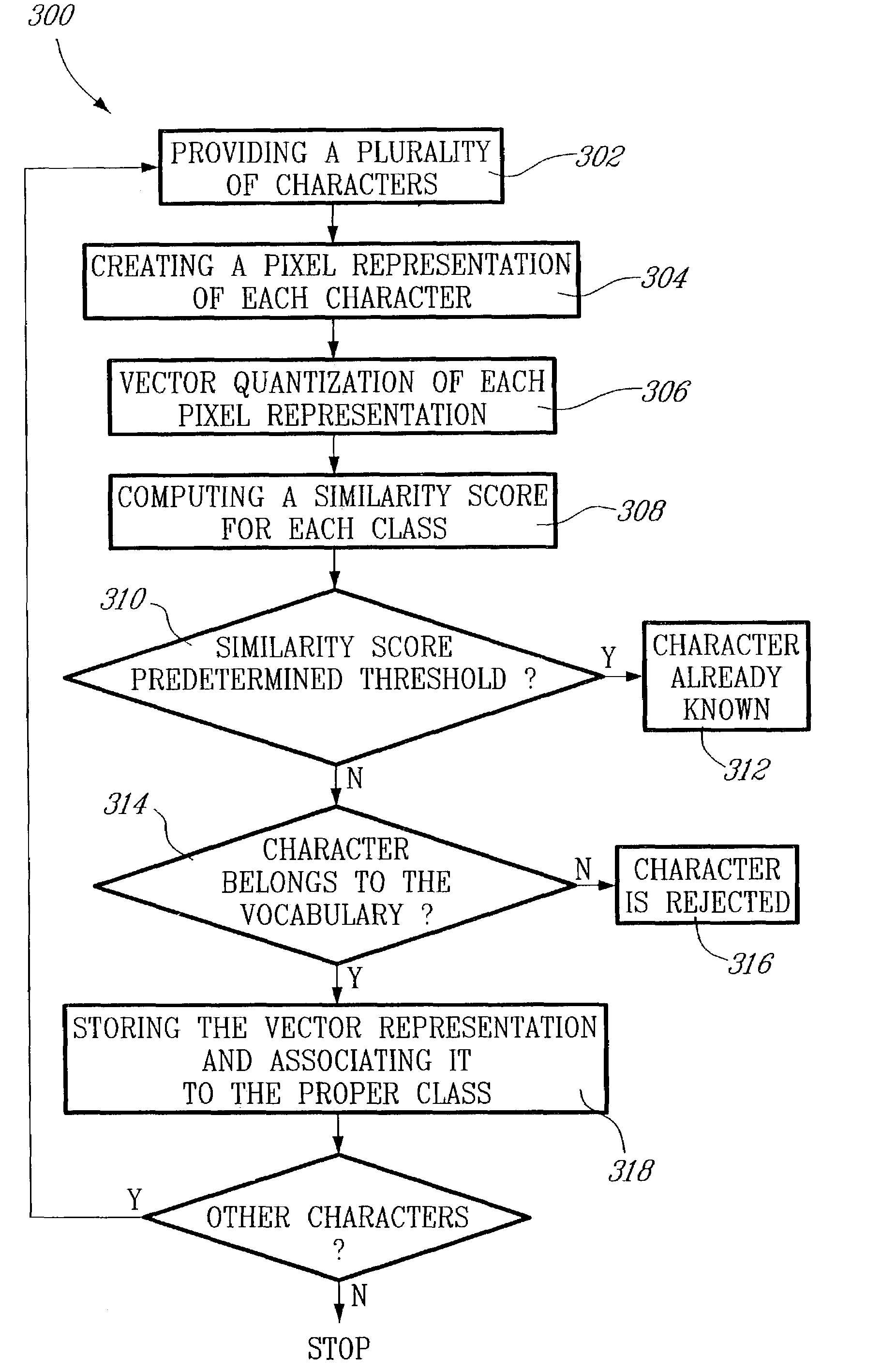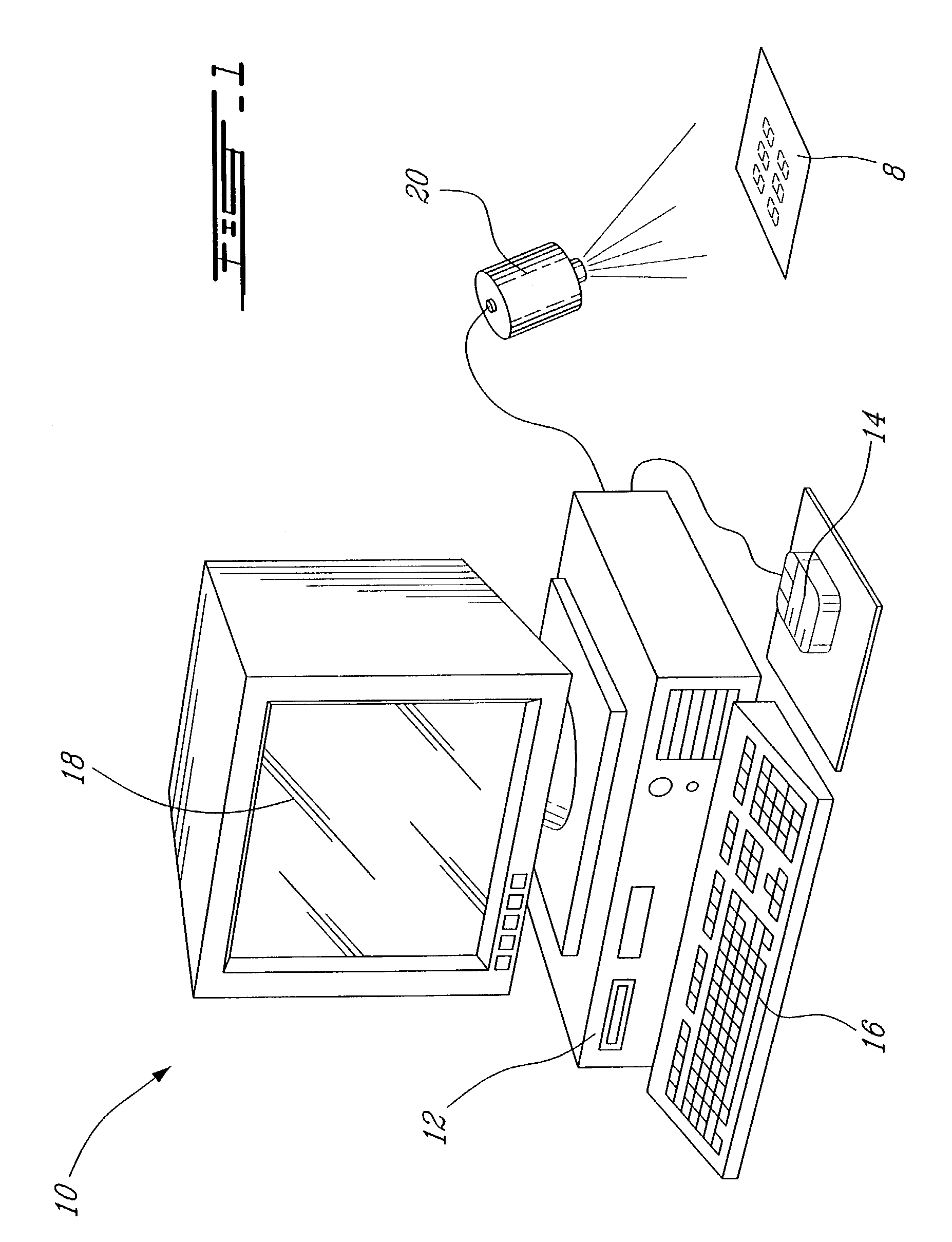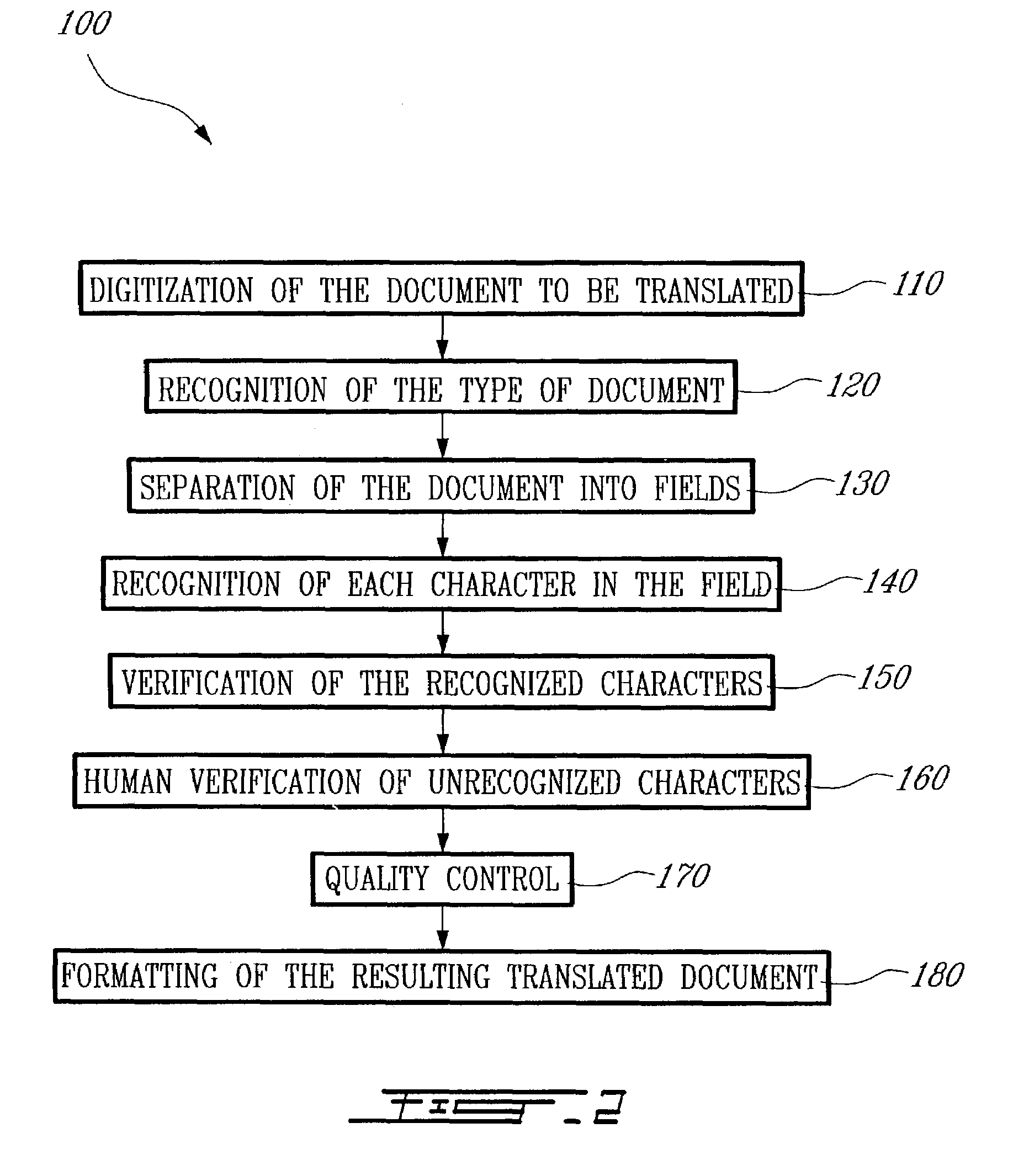Character recognition system and method
a character recognition and pattern recognition technology, applied in the field of character and pattern recognition systems and methods, can solve the problems of time-consuming and laborious design and adaptation of fuzzy logic control systems, difficulty in recognizing patterns, and inability to meet the requirements of ocr applications
- Summary
- Abstract
- Description
- Claims
- Application Information
AI Technical Summary
Benefits of technology
Problems solved by technology
Method used
Image
Examples
Embodiment Construction
[0096]Turning now to FIG. 1 of the appended drawings, a system 10 for translating a written document 8 into a computer readable document according to an embodiment of a first aspect of the present invention will be described.
[0097]The system 10 comprises a controller 12, input devices such as a pointing device 14 and a keyboard 16, a display device 18, a document digitizer 20, and a storing device (not shown).
[0098]The input devices 14 and 16, and display device 18 are coupled to the controller 12 through conventional coupling means.
[0099]The display device 18 and input devices 14 and 16 are optional but may allow a system operator to perform the verification of unrecognized characters as will be explained hereinbelow in more detail.
[0100]The display device 18 is in the form of a computer monitor, but may alternatively be in the form of a liquid crystal display or of any device that allows display of digitized printed character or of the actual printed or handwritten characters as f...
PUM
 Login to View More
Login to View More Abstract
Description
Claims
Application Information
 Login to View More
Login to View More - R&D
- Intellectual Property
- Life Sciences
- Materials
- Tech Scout
- Unparalleled Data Quality
- Higher Quality Content
- 60% Fewer Hallucinations
Browse by: Latest US Patents, China's latest patents, Technical Efficacy Thesaurus, Application Domain, Technology Topic, Popular Technical Reports.
© 2025 PatSnap. All rights reserved.Legal|Privacy policy|Modern Slavery Act Transparency Statement|Sitemap|About US| Contact US: help@patsnap.com



